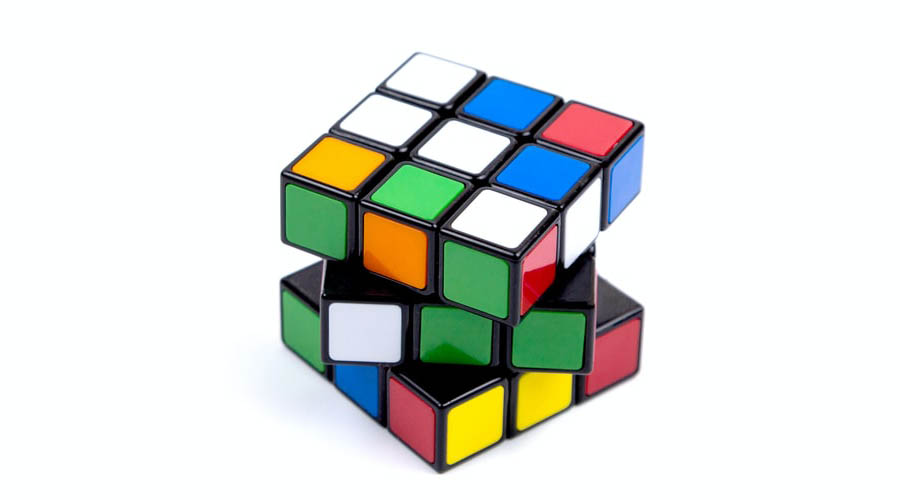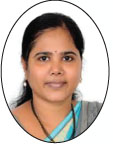Neurobiology of Autism Spectrum Disorder
By: Dr.Anuja Venkatesh
Autism spectrum disorder refers to a group of complex neurodevelopment disorder characterized by a repetitive and pattern of behaviour and inability to form reciprocal social interaction impairment in verbal and non-verbal communication. The term ‘Spectrum” refers to the wide range of symptoms, skills, variation in level of disability in functioning of the individual with ASD. It starts with early childhood and affects day to day functioning. Autism disorder associated with the cortex, both its neuron and its projections. Furthermore, the disorder has a broad impact on cognitive and neurological functioning.
Anatomical abnormalities have been identified in many brain areas in autism. These include the cerebellum, the brain stem, frontal lobes, parietal lobes, hippocampus, and the amygdale. Epilepsy also occurs commonly. In terms of neuropathology, the number of Purkinje cells in the cerebellar cortex is abnormally low. This has been postulated to lead to disinhibition of the cerebellar deep nuclei and consequent overexcitement of the thalamus and cerebral cortex. Abnormalities were found in the density of packing of neurons in the hippocampus, amygdale and other parts of the limbic system. Low degree of dendritic branching was also found in a Golgi analysis of the hippocampus of two autistic brains, such abnormality was confirmed in many research. There will be reduction in the size of cortical minicolumns and an increase in cell dispersion within these minicolumns. These might indicate an increase in the number of and connectivity between minicolumns.
Morphometric and chemical neuroimaging studies show volume deficits in the cerebellum, the brainstem, and posterior corpus callosum. Regarding the cerebellar abnormalities, a subgroup shows increased cerebellar volume. A volume deficit has also been reported in the parietal lobe. Neuropsychology suggests this is associated with a narrowed spatial focus of attention this pattern has been detected only recently because for much of its 70 year history, ASD brain abnormalities were viewed as static. The few cross-sectional studies that examined age-related changes reveal a complex pattern of growth abnormalities in the cerebellum, cerebrum, and amygdala and possible differences in hippocampus and Age-related differences in specific brain region growth were also seen. Brain size has been defined using head circumference, a reliable indicator of volume especially during early childhood.
Using MRI volumetric analysis, or measures of head circumference, the autistic brain appears to involve transient postnatal macroencephaly. Neonates later diagnosed with autism or PDD-NOS (Pervasive Developmental Disorder-Not Otherwise Specified) have normal head circumference, but by 2–4 years of age 90% of these have MRI based brain volumes larger than average.44–47 This reflects an enlargement of cerebellar and cerebral white matter, and cerebral grey matter. Enlargement of superficial white matter tracts containing cortico-cortical fibres may persist abnormally late into development, while the internal capsule and corpus callosum are smaller.Cerebellar and cerebral white matter volumes, and cerebellar vermis size can distinguish 95% of toddlers with autism from normal controls, and predict if the child with autism will be high or low functioning.
The genetic basis of Autism: one of the most strongly heritable major neurodevelopment disorders. It is also encompassed with deficits including social impairment, communication. Genetical studies have found chromosomal abnormalities, variation within chromosomal loci. This genetic variation contributing 5-15% case as ASD. Prenatal exposure to certain chemical such as ethyl alcohol, thalidomide form unknown combination of genetic predisposition and environment variation determining the severity of the phenotype which leads to ASD. it was found that 60% of monozygotic (MZ) pairs were concordant for autism versus no dizygotic, (DZ) pairs. When they considered a broader phenotype (of related cognitive or social abnormalities), 92% of MZ pairs were concordant versus 10% of DZ pairs. Molecular genetic studies are beginning to narrow down candidate regions. There is still little consensus. These are 15q11- 13, near the GABAAb3 receptor subunit gene (GABRB3) and a second one on 17q11.2, near the serotonin transporter gene (SLC6A4). Serotonin innervates the limbic system, and so plausibly plays a role in emotion recognition and empathy. Mothers homozygous for GABRB3 knockout fail to engage in normal nurturing behaviour and have epileptiform EEG.At least four loci on the X in autism, and are of interest for their power to explain the sex ratio in autism (markedly biased towards males). As of yet, specific genes for autism have not yet been identified, despite the encouraging possibility of candidate regions on chromosomes.
Signalling imbalance in Autism. The autism brain may be overactive because of signalling imbalance, too much excitatory signalling or little inhibition. This may be reason why so many autistic people have seizure or epilepsy.
Balanced signalling: about 80% of neuron in cerebral cortex which covers the surface of the brain transmits excitatory signals, primarily by releasing the neurotransmitter glutamate. The remaining 20% known as interneuron are inhibitory. They operate via gamma-aminobutyric acid(GAMA). The proper balance of these two types of signals enables brain cells to be active in some circumstances and muted in other. This underlies the brain ability to take in sensory information, learn, remember and direct behaviour.
Imbalanced signalling in Autism: many autistic people have epilepsy, which results from too much excitation in the brain. Recording of brain activity during sleep shows that people with Autistic have unusual frequent spikes of activity. Some children with autism have low level of GABA in brain which reduces the GABA signalling. Too much activity in circuits that process sensory information, which may cause hypersensitivity to sound, touch and other stimuli. Due to signal imbalanced could also underlie social problems repetitive behaviour and motor problems.
Signs and Symptoms ASD
Rarely make eye contact, lack of responses to their name.
Some autistic children suddenly become withdrawn or aggressive or lose language skills they’ve already acquired. Signs usually are seen by age 2 years.
Children with autism spectrum disorder have unique pattern of behaviour, level of severity from low functioning to high functioning
Some autism children have signs of lower than normal intelligence, some children have normal to high intelligence but they have trouble in communicating and applying what they know in everyday life and adjusting to social situations.
Because of the unique mixture of symptoms in each child, severity can sometimes be difficult to determine. It’s generally based on the level of impairments and how they impact the ability to function.
Resists cuddling and holding, and seems to prefer playing alone, retreating into his or her own world.
Repeats words or phrases verbatim, but doesn’t understand how to use them
Doesn’t appear to understand simple questions or directions
Doesn’t express emotions or feelings and appears unaware of others’ feelings.
Management of Autism Spectrum Disorder
There is no single treatment for autism. Treatments can include intensive skill-building and teaching educational sessions, known as applied behavior analysis (ABA), and many more interactive, these intervention will help children with ASSD to develop social and language skills.. Treatment may also involve special training and support for parents, speech and language therapy, occupational therapy and/or social skills training. Also, some children and adults with ASD have other kinds of psychological difficulties at some point in their lives, such as anxiety, ADHD, disruptive behaviors or depression. These difficulties can be treated with therapy or with medication. There are currently no medications that directly treat the core features of ASD
Theory of Mind.
Children with autism spectrum delayed in developing a theory of mind. Theory of mind is part of a cognitive and meta-cognitive beginning with Piaget. According to Premack and Woodruff(1978), a defined theory of mind is the capacity of an adult chimpanzee to infer mental states in other sparked a wave of interest. Theory of mind also associated with language and social competence. Theory of mind creates a major barrier to communication and closeness. These barriers often lead to those nearest to the individual feel whether real or perceived, a lack of empathy from the individual.
Take the following example: Sally with a basket and Anne with a box. They’re also a Marbles, Sally picks up the marbles and put in her basket, and leaves the stage while Sally is away Anne reaches over the stage and takes the marble out of sally basket and place it in the box. After a moment Sally comes back on stage a simple question was raised. Where will Sally look for her marble? For the neurotypical 99 percent of the population, even children as young as 3 years old, the answer seems sally will look in her basket. She doesn’t know that the ball has been moved. In our heads, we imagine that we know that knows, from her observations of her situation and our understanding of how the mind operates. Around 99 % of that 1% will point to the box. In their minds, the model of what sally knows and how her mind would operate is not distinct from their knowledge and thoughts. This inability to construct a theory of Mind for sally may underly some of the behavior and symptoms that characterized ASD. Theory of mind gets deep into the philosophy of consciousness and reality. It refers to our ability to infer what others are thinking or feeling.


Useful information about autism. All info in a single article. Thank you mam!
Very knowledgeable. Great!!